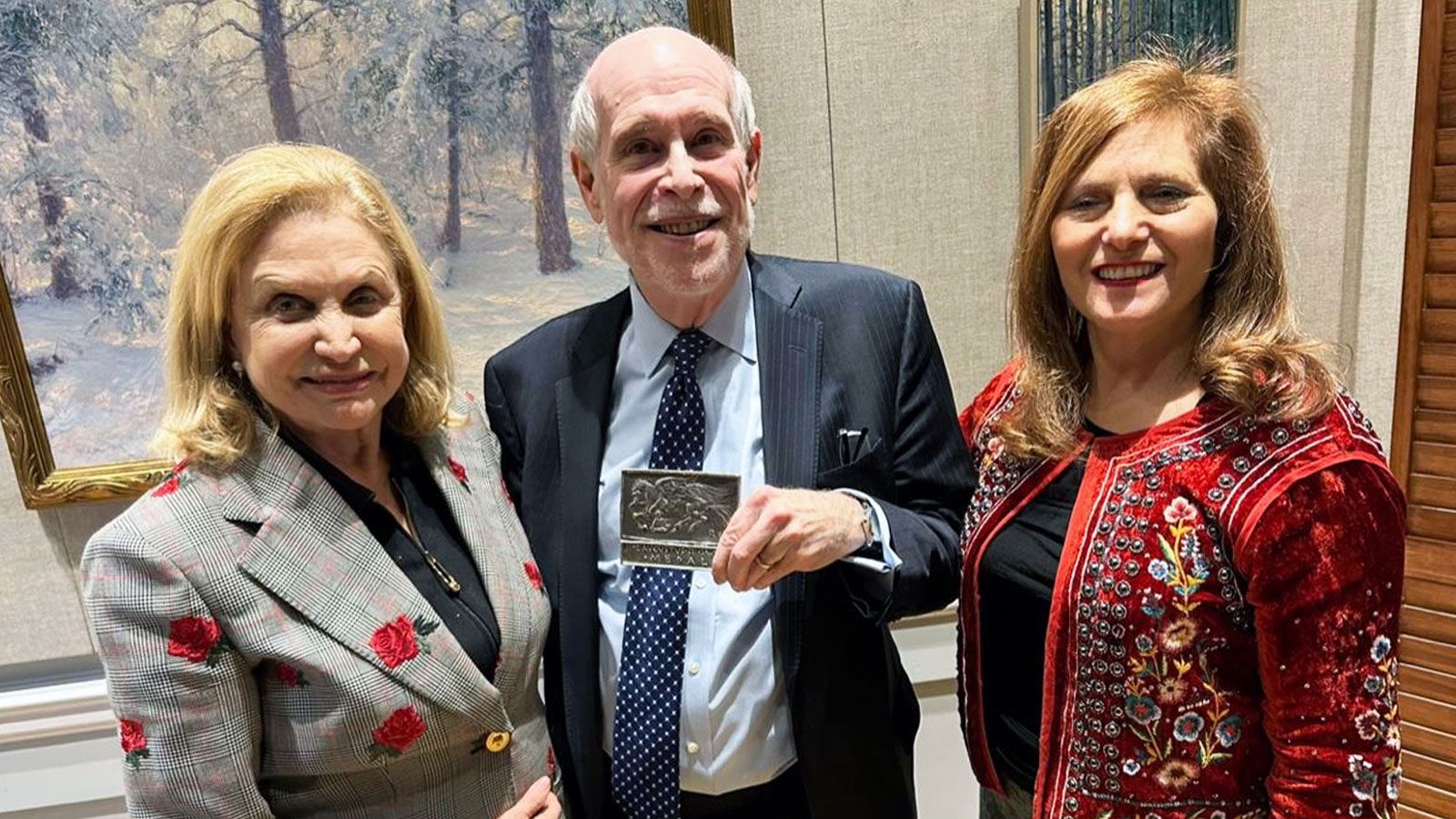He was praised for singing someone else’s praises.
Roosevelt House’s Harold Holzer was awarded the Saint-Gaudens Medal in a ceremony in Manhattan on Jan. 9, honoring his role in promoting the work of Gilded Age sculptor Augustus Saint-Gaudens.
Holzer, a historian of Abraham Lincoln and the Civil War era, frequently has cited Saint-Gaudens — whose works include Abraham Lincoln: The Man (Standing Lincoln) (1884-87) and Seated Lincoln (1897–1906) — as the standard-bearer for civic monuments commemorating Lincoln.
“Harold has engaged a broad audience, bringing a wealth of insights into our ever-evolving understanding of Lincoln as man, president, and icon,” said Saint-Gaudens Memorial president Thayer Tolles. “His writings on the portrayals of Lincoln in the visual culture of the United States complement the Memorial’s longstanding commitment to fostering the enduring legacy of Saint-Gaudens.”
Established in 1988, the Saint-Gaudens Medal is awarded to those who contribute to the arts in the United States in the tradition of sculptor Augustus Saint-Gaudens (1848–1907). It has been awarded 13 times, most recently in 2021 to art historian Wanda M. Corn in recognition of her longstanding commitment to the preservation and stewardship of historic artists’ properties.
On hand for the ceremony was Hunter College President Jennifer J. Raab, who said she was delighted Holzer was honored in such a way.
“We’re so proud of Harold for the scholarship he continues to pursue while leading the Roosevelt House Public policy institute,” she said.
Holzer was surprised by the honor, because one of his most recent books, 2019’s award-winning Monument Man, focuses on a Saint-Gauden contemporary, Daniel Chester French, who carved what arguably is the most famous Lincoln sculpture — the one that sits at the Lincoln Memorial in Washington, DC.
“For a ‘Dan French’ man to be recognized with the prestigious Saint-Gaudens Medal suggests that the creative synergy that once existed between those two giants continues to animate the study of, and appreciation for, American sculpture,” Holzer said. “I am so grateful to the Saint-Gaudens experts who helped me with my research on Monument Man, and continue to educate and inspire me. I am so glad that we remain interconnected in pursuit of, and appreciation for, these extraordinary artists."
But experts pointed out Holzer’s work on French had plenty of kind words for Saint-Gaudens.
“In his art-related scholarship Harold Holzer has consistently highlighted Saint-Gaudens and his important relationships with fellow artists of his time,” said Donna Hassler, Director Emerita, Chesterwood, National Trust for Historic Preservation, and also a trustee of the Saint-Gaudens Memorial. “Most recently in Monument Man, Saint-Gaudens receives prominent consideration.”
According to Holzer, Saint-Gaudens again makes an appearance a forthcoming book he’s written on Lincoln, immigrants, and immigration.
In it, he tells the story of how a teenaged Saint-Gaudens, then an immigrant cameo maker, waited on what he called an “interminable” line outside City Hall in New York City to view Lincoln’s body as it lay in state.
“He waited on that line; he went up those stairs; he looked at the remains; and, as soon as he was done, he raced back onto the line to get a second look,” Holzer said. “He could not get enough of this iconic face, which he would one day immortalize.”
The Saint-Gaudens medal was designed in 1992 by sculptor Robert W. White (1921–2002), a trustee of the Saint-Gaudens Memorial from 1972 to 2002 and grandson of the architect Stanford White, who often collaborated with Saint-Gaudens.


